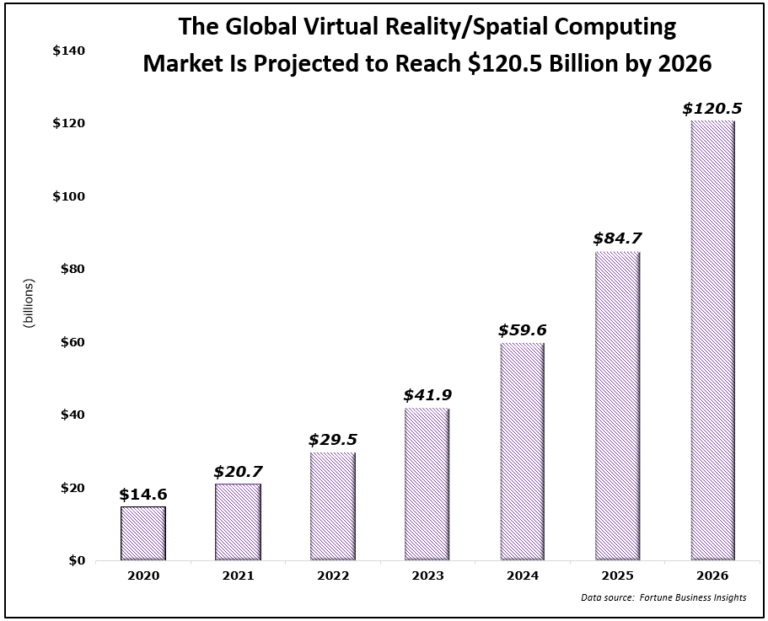One of the best ways to make money in the stock market is to find a dominant technological trend and buy the leaders.
At my newsletter Bull and Bust Report we have profited from the 5G megatrend. Broadcom is up 98%, Qualcomm is up 174%, and SBA Communications is up 54%.
We have profited from fintech. Visa is up 169%, PayPal is up 105.36%, and Mastercard is up 16%.
The next five-year megatrend we are going after is something you might not have heard of before… It’s called spatial computing.
What Is Spatial Computing?
Spatial computing is the merging of several technological fields. It takes big data, the internet of things, artificial intelligence, 5G, blockchain, and augmented reality and combines them into a tool that will change the world.
It is currently used in video games, surgery, driverless cars, on-site construction management, and major warfighting machines like the sixth-generation fighter jets and tanks.
Spatial computing will change the factory floor, diplomacy, and how things are built and manipulated.
It is a merger between the real world and the digital world. In other words, spatial computing expands the concept of “traditional computing” by adding an object’s location in space in relation to other objects or locations.
Here are a few examples of how millions of us are already using spatial computing:
- Google Maps, which employs GPS to show just where you are in relation to your neighborhood, city, state, or even the world — and also brings you virtually to almost any place in the world in a matter of seconds.
- Location tagging on social media apps such as Instagram, where you can let your followers know exactly where you were when you snapped that great pic of a buffalo out in the wilds of Wyoming.
- Pokémon Go, in which you use an app to try to find virtual creatures almost anywhere in your environment.
And here are a few other examples of more advanced applications:
- Engineers can now see an image of complex wiring directions — a “digital twin” — right on top of or next to a picture of an airplane engine or huge wind turbine.
- Doctors can view internal organs virtually before they go in to perform surgery, which could help make these procedures less risky as well as speed them up.
- Shoppers looking for furniture can virtually install a couch or loveseat in their homes using spatial computing before buying it and finding out it doesn’t really fit in… or maybe even fit.
- Fighter jets are using linked swarms of drones for protection and attack.
Our analysts have traveled the world over, dedicated to finding the best and most profitable investments in the global energy markets. All you have to do to join our Energy and Capital investment community is sign up for the daily newsletter below.The Best Free Investment You’ll Ever Make
Within the spatial computing market is the virtual reality sector. These are the companies that make the hardware and software needed to interact with the computer. And this market is expected to have a compound annual growth rate of 42.2% over the next five years. That’s a big number!

One $4 company I recommended in early December jumped 84% in the first week. The companies that build the software and hardware in this space will do very well over the next five years.
I am currently dotting the i’s and crossing the t’s on a special report detailing the opportunities in this sector. Keep an eye out for it.
All the best,
Christian DeHaemer Christian is the founder of Bull and Bust Report and an editor at Energy and Capital. For more on Christian, see his editor’s page.

